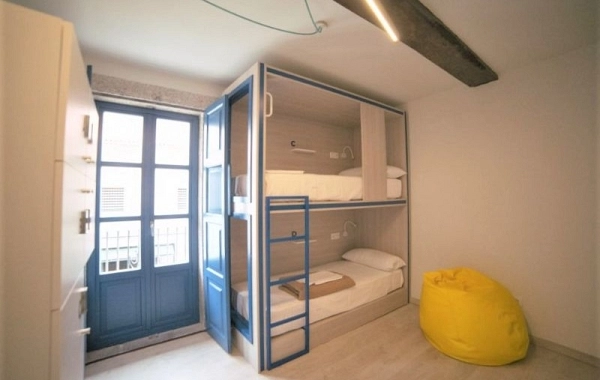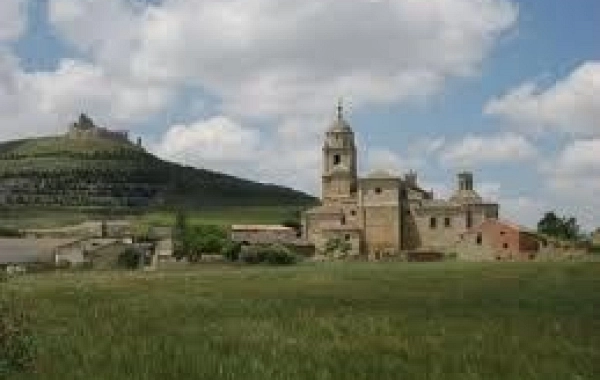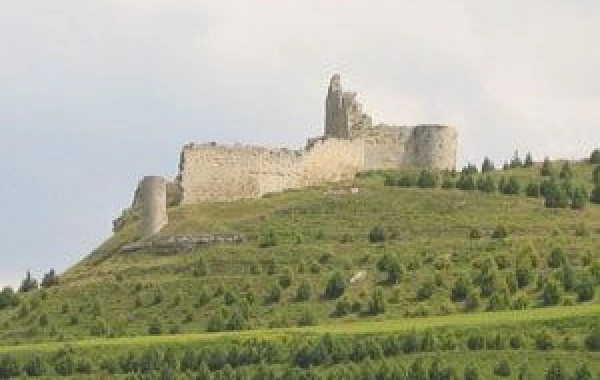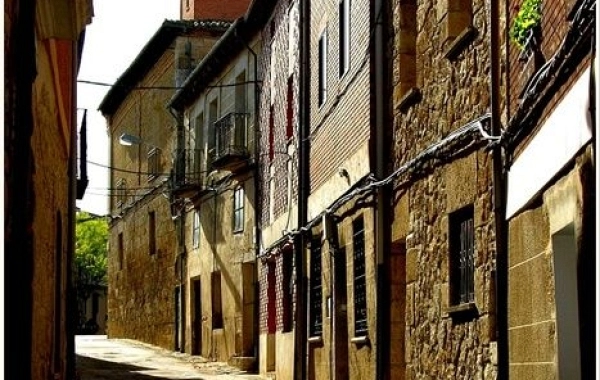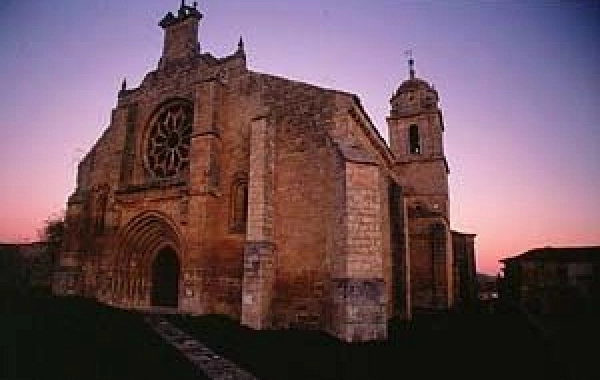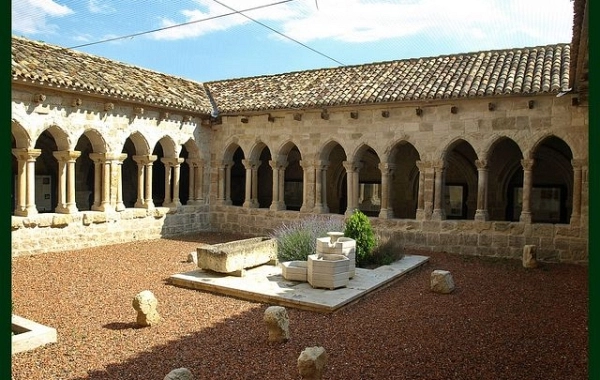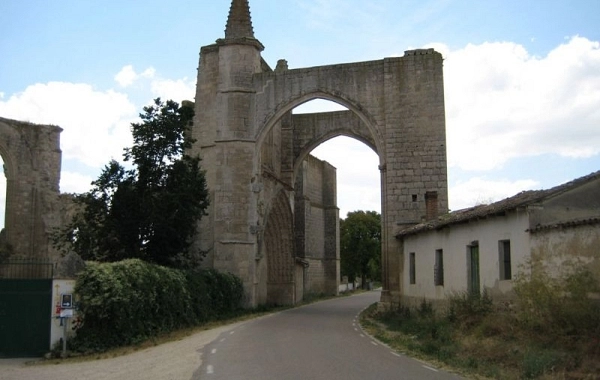CF15 - Hornillos del Camino - Castrojeriz - 20,40 km
Distance20 Km.Related packages
Arroyo de San Bol: A Mysterious Place on the Camino de Santiago
Location and Features
Just over four kilometres from Hornillos, Arroyo de San Bol is a place full of mystery and an important landmark on the Camino de Santiago. After leaving Hornillos behind, the typical wine cellars and ruins of the area are the last signs of civilisation before entering a path surrounded by nature. The route crosses a small poplar grove and a concentration path which, though steep, presents no notable difficulties. Upon reaching the summit, pilgrims begin a pleasant descent into the valley of San Bol.
The Mystery of San Bol
Arroyo de San Bol is known for its aura of esotericism and enigmas. The abandonment of the village in 1503, possibly due to an epidemic, has given rise to many legends that fuel its mysticism. However, this place holds the remains of the ancient convent of San Baudilio, which was under the care of the Antonian monks of Castrojeriz and later of the monasteries of Oña and Cardeña. Today, the convent has been transformed into a modest pilgrim's hostel, though it lacks basic services. Despite this, it remains a must-stop for many pilgrims, who feel that this is a unique place on their journey to Compostela.
Ascent and Cautions
After resting at Arroyo de San Bol, pilgrims face a new ascent. The stretch is short but steep. Further ahead, special care is needed when crossing the road that connects Iglesias (the locality to which Arroyo de San Bol belongs) with Olmillos de Sasamón. Caution is essential in this area.
Hontanas: A Refuge on the Camino de Santiago
Arrival in Hontanas
About five kilometres from Arroyo de San Bol, pilgrims arrive at Hontanas, a village whose location, hidden at the bottom of a valley, makes it difficult to see from afar. The name "Hontanas" comes from the word "fontana", referring to the spring that gives life to this village. In the 14th century, its church dedicated to the Immaculate Conception stood as a symbol of local history. Nearby, a fountain quenches the thirst of travellers.
Hospital de los Franceses and More History
Hontanas preserves its heritage well. Notably, the "Hospital de los Franceses", which originally served as a hospital for pilgrims, is still a place of hospitality today. Pilgrims can rest here before continuing their journey to the next destination.
Upon leaving the village, the route continues along a path that runs along the hillside, parallel to the road leading to Castrojeriz. Along the way, remains of ancient defensive constructions evoke the history of the region.
Convento de San Antón: A Historical Monument
Ruins of the Convent
The Camino de Santiago continues its course, and soon after Hontanas, pilgrims encounter the ruins of the Convento de San Antón. These ruins, though consolidated, show the wear of time and serve as a reminder of the abandonment the convent suffered since the 18th century. Founded in 1146, the Convento de San Antón was under the administration of the Antonian monks, who helped sick pilgrims, especially those affected by ergotism, also known as "Saint Anthony’s Fire". Over the centuries, the convent was a key place for the medical and spiritual care of pilgrims, but its abandonment began in the 18th century and was completed in 1791.
Historical Significance
The Convento de San Antón was linked to important religious and medical traditions. The Antonian monks, known for their dedication to curing "Sacer Ignis", had a profound knowledge of the disease of ergotism, which caused severe infections in pilgrims. Today, the ruins of San Antón remain a testament to the legacy of the monks and the history of the Camino.
Castrojeriz: A Village Full of History
Castrojeriz: A Medieval Village
Castrojeriz is a medieval village set on the slopes of a ruined castle. The town has a rich history, dating back to the Visigothic era, and was a strategic location during the conflicts between Juan II of Castile and the Count of Castro. Known as "Castrum Sigerici", it was definitively incorporated into the Castilian crown in 1131. Upon arriving in Castrojeriz, pilgrims are greeted by a monumental cross and the collegiate church of Nuestra Señora del Manzano, a Gothic temple that houses important artistic pieces, including the image of "Santa María de Almazán", mentioned in the Cantigas of Alfonso X the Wise.
Places of Interest and Legends
In Castrojeriz, there is also the Church of San Juan, built in the 14th century, famous for its slender tower and abandoned cloister. Local history is filled with legends, such as the one about horseshoes on the door of the collegiate church, which are linked to a feat of Saint James.
Conclusion: A Camino Full of History and Spirituality
The stage that
Stages
- CF01 - Saint Jean de Pied de Port - Roncesvalles - 21 km
- CF02 - Roncesvalles - Zubiri - 22 km
- CF03 - Zubiri - Pamplona - 20 km
- CF04 - Pamplona - Puente la Reina - 19 km
- CF05 - Puente la Reina - Estella - 19,7 km
- CF06 - Estella - Los Arcos - 20,6 km
- CF07 - Los Arcos - Viana - 18 km
- CF08 - Viana - Navarrete - 22,3 km
- CF09 - Navarrete - Nájera - 16,9 km
- CF10 - Nájera - Santo Domingo de la Calzada - 21 km
- CF11 - Santo Domingo de la Calzada - Belorado - 22,7 km
- CF12 - Belorado - San Juan de Ortega - 24 km
- CF13 - San Juan de Ortega - Burgos - 27,6 km
- CF14 - Burgos - Hornillos del Camino - 18,3 km
- CF15 - Hornillos del Camino - Castrojeriz - 20,40 km
- CF16 - Castrojeriz - Frómista - 24,90 km
- CF17 - Frómista - Carrión de los Condes - 19,2 km
- CF18 - Carrión de los Condes - Lédigos - 23,40 km
- CF19 - Lédigos - Sahagún - 17,10 km
- CF20 - Sahagún - El Burgo Ranero - 17,9 km
- CF21 - El Burgo Ranero - Mansilla de las Mulas - 18,7 km
- CF22 - Mansilla de las Mulas - León - 18,4 km
- CF23 - León - Villadangos del Páramo - 21,8 km
- CF24 - Villadangos del Páramo - Astorga - 26 km
- CF25 - Astorga - Rabanal del Camino - 20,6 km
- CF26 - Rabanal del Camino - Molinaseca - 24,7 km
- CF27 - Molinaseca - Villafranca del Bierzo - 30,5 km
- CF28 - Villafranca del Bierzo - O Cebreiro - 30 km
- CF29 - O Cebreiro - Triacastela - 22,9 km
- CF30 - Triacastela - Sarria - 22 km
- CF31 - Sarria - Portomarín - 22 km
- CF32 - Portomarín - Palas del Rei - 23,9 km
- CF33 - Palas del Rei - Arzúa - 28,6 km
- CF34 - Arzúa - Santiago de Compostela - 38,4 km
- CF35 - O Pedrouzo - Santiago de Compostela - 20 km




